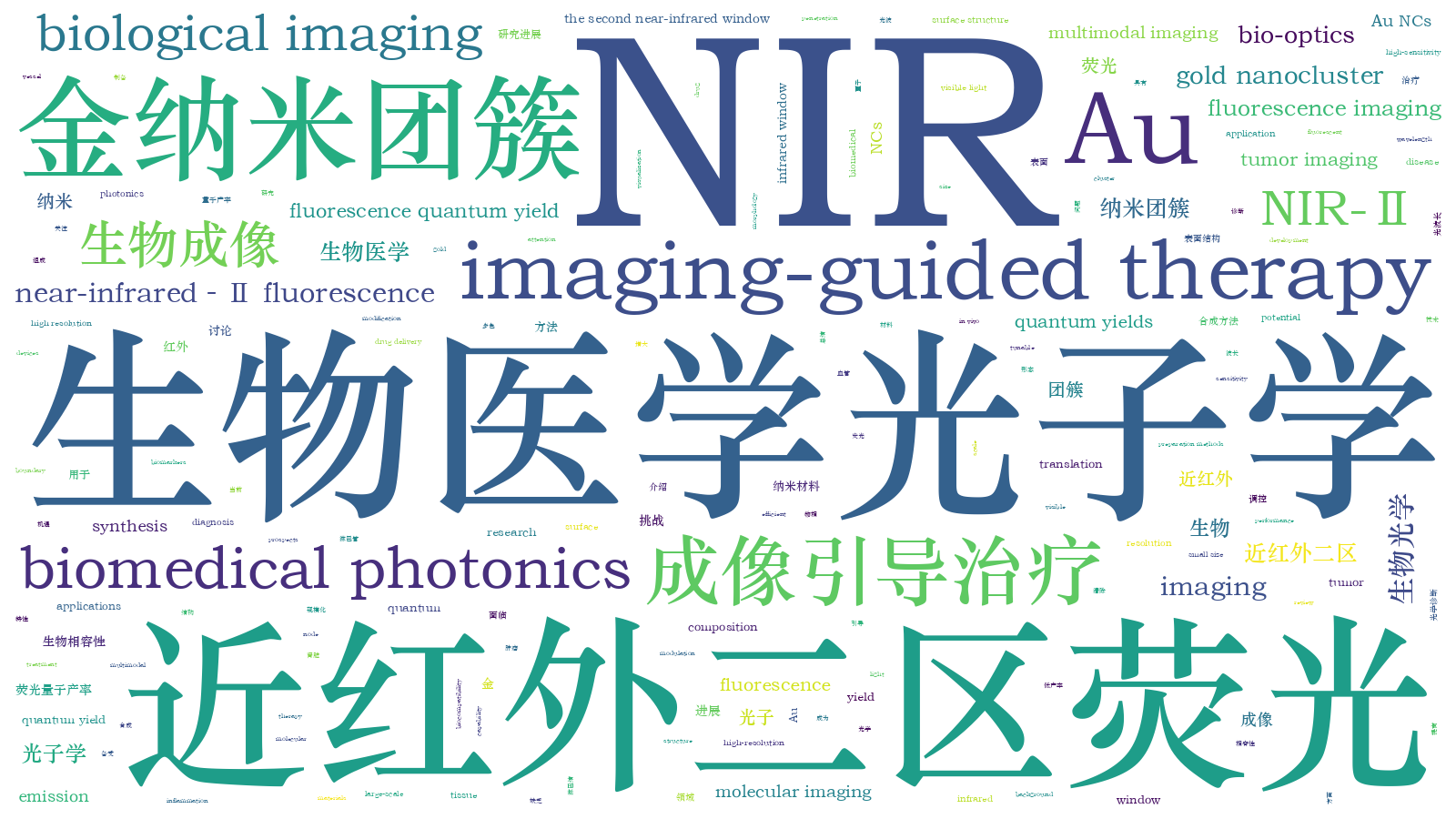近红外二区荧光金纳米团簇用于生物医学光子学:进展与挑战
Recently, fluorescence imaging in the second near-infrared window (NIR-Ⅱ, 1000?1700 nm) has attracted widespread attention from researchers. Compared with visible light window (300?550 nm) and first near-infrared window (NIR-I, 600?950 nm) imaging, NIR-Ⅱ fluorescence imaging exhibits unique advantages such as high tissue penetration (on the order of centimeters), high resolution (on the order of nanometers), and low background. NIR?Ⅱ fluorescent gold nanoclusters (NIR?Ⅱ Au NCs) represent a category of nano-materials with exceptional clinical translational potential. NIR?Ⅱ Au NCs possess singular advantages of monomeric composition, stable performance, small size (<3 nm), and renal clearance capability. They have been applied in various fields, including tumors, cardiovascular diseases, bacterial infections, neurosciences, and implantable medical devices, demonstrating significant potential applications and promising clinical translation prospects in the realm of high-sensitivity, high-resolution, and deep-tissue molecular imaging of major disease biomarkers.
In this review, we initially introduce the synthesis methods of NIR-Ⅱ Au NCs, discussing the challenges of low yield and scalable production. Subsequently, we delve into the surface modulation techniques for NIR-Ⅱ Au NCs, and methods to regulate the cluster surface structure, composition, and morphology for enhancing their emission wavelengths and fluorescence quantum yields. We then summarize the latest research advancements of NIR?Ⅱ Au NCs in vascular imaging, lymphatic vessel and lymph node imaging, tumor imaging, and imaging-guided therapy. Finally, we discuss the opportunities and challenges faced by NIR-Ⅱ Au NCs in the field of biomedical photonics.
NIR?Ⅱ Au NCs stand as potent candidates in the realm of biomedical photonics research, showcasing advantages of convenient synthesis, singular composition, tunable emission wavelength, good biocompatibility, in vivo clearance, and ease of targeted modification. They have demonstrated promising applications in tumor diagnosis, drug delivery, and multimodal imaging. However, further application and clinical translation of NIR?Ⅱ Au NCs encounter numerous challenges: 1) Existing synthesis methods of NIR?Ⅱ Au NCs suffer from low yield and lack of large-scale macro production processes, necessitating the development of more efficient preparation methods and processes. 2) The central emission wavelengths of existing NIR?Ⅱ Au NCs are less than 1300 nm, with a fluorescence quantum yield below 10%, urgently requiring improved synthesis methods to increase their emission wavelengths and enhance their NIR?Ⅱ fluorescence quantum yields. 3) The clinical use scenarios of NIR?Ⅱ Au NCs require further investigation to elucidate their precise clinical value and better serve disease diagnosis and treatment. Future research can expand into other application areas, including cardiovascular diseases, inflammation imaging, and intraoperative tumor boundary visualization, to better meet clinical translation needs and play a crucial role in safeguarding public health.
李丝雨, 田方正, 高笃阳, 胡德红, 郑海荣, 盛宗海, 居胜红. 近红外二区荧光金纳米团簇用于生物医学光子学:进展与挑战[J]. 中国激光, 2024, 51(3): 0307201. Siyu Li, Fangzheng Tian, Duyang Gao, Dehong Hu, Hairong Zheng, Zonghai Sheng, Shenghong Ju. NIR‑







